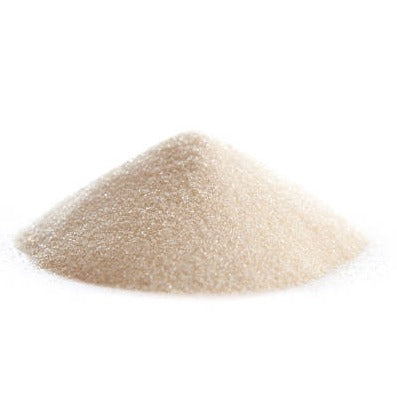The look on someones face when you tell them they are able to grow taller at any age is absolutely priceless.
"Are you like a doctor or something"
No, but I have experience helping over 1.500 people grow taller, has it been scientifically proven? yes, it actually has, if you dwelled enough around pubmed like I have you would have found it as well (but you haven't)
So, by what mechanisms can you actually grow taller then?
Number 1: Endochondral ossification of the articular cartilage
Endochondral ossification is the phenomenon where cartilage turns into bone. Endochondral ossification consists out of multiple steps:
- Cartilage formation: The process begins with the formation of a cartilage model of the future bone. This cartilage model is laid down in the shape of the bone it will become.
- Growth of Cartilage: As the cartilage model grows, chondrocytes (cartilage cells) within the model continue to proliferate and produce more cartilage matrix.
- Calcification: In the central region of the cartilage model, chondrocytes begin to hypertrophy (enlarge) and mineralize the surrounding cartilage matrix. This mineralization process hardens the cartilage.
- Blood Vessel Invasion: Blood vessels and osteoblasts (bone-forming cells) invade the calcified cartilage, bringing osteogenic cells that will eventually become osteoblasts.
- Osteoblast Activity: Osteoblasts lay down bone matrix over the calcified cartilage, forming trabeculae (spongy bone) in the primary ossification center.
- Formation of Bone Collar: Meanwhile, on the outer surface of the cartilage model, mesenchymal cells differentiate into osteoblasts and produce a collar of compact bone.
Endochondral ossification is kinda how you grow during puberty, by the Epiphyseal cartilage rapidly increasing in cartilage and that cartilage turning into bone. When we talk about closed growth plates we are talking about Epiphyseal plates that have fully turned into bone without any cartilage left that can be ossified. But what many don't know is that Endochondral ossification is also possible on the articular cartilage (the cartilage that you keep forever) quick overview for you: sciencedirect.com/topics/veterin>
Number 2: Wolff's law
Johannes Wolff, often referred to as Julius Wolff, was a German anatomist and surgeon who proposed what is known as Wolff's law in the late 19th century. Wolff's law is a principle that describes how bone adapts to mechanical stresses placed upon it during growth and development. The law can be summarized as follows: Wolff's Law states that bone tissue will remodel and adapt in response to the mechanical stresses placed upon it.
Specifically, bones will become stronger and denser in areas where they experience increased mechanical loading, and they will weaken in areas where loading is decreased. This adaptation is driven by the osteoblasts (bone-forming cells) and osteoclasts (bone-resorbing cells) in response to the mechanical forces acting on the bone. When a bone is subjected to stress, osteoblasts become more active in depositing new bone tissue, reinforcing the bone and making it stronger.
Conversely, when mechanical stress on a bone is reduced, osteoclasts become more active, leading to bone resorption and weakening of the bone. Wolff's law is NOT limited by age, and definitely doesn't stop working for you if you are out of puberty (or if you are 60). Bone KEEPS ADAPTING, this is why if you do the correct type of movement, you can trigger your bones to grow longer just as long as it gets a proper stimuli (which I teach you)
Number 3: Bone remodeling
Bone remodeling is about the balance of Osteoclasts/blasts in the bone Osteoclasts are specialized cells responsible for bone resorption, the process of breaking down old or damaged bone tissue.
Osteoclasts secrete enzymes and acids that dissolve the mineral component of bone and break down the organic matrix.
Osteoblasts are bone-forming cells that synthesize and deposit new bone tissue. Osteoblasts produce collagen and other proteins that form the organic matrix of bone, and they also initiate the mineralization of bone tissue by depositing calcium and phosphate ions.
Things that regulate bone remodeling:
- Hormones: Hormones such as parathyroid hormone (PTH) and calcitonin play key roles in regulating bone remodeling by influencing the activity of osteoclasts and osteoblasts.
- Mechanical Factors: Mechanical loading and stress on bones also influence bone remodeling. Weight-bearing exercise and physical activity stimulate bone formation, while immobilization or lack of mechanical loading can lead to bone loss. Local Factors: Various cytokines, growth factors, and signaling molecules produced by cells within the bone microenvironment also regulate the activity of osteoclasts and osteoblasts.
The process of Bone remodeling goes as follows:
- Resorption Phase: Osteoclasts attach to the bone surface and initiate bone resorption by forming a sealing zone that isolates the resorption lacuna. They then secrete enzymes and acids to dissolve the mineral component of bone and degrade the organic matrix.
- Reversal Phase: Following resorption, the bone surface undergoes a period of quiescence known as the reversal phase. During this time, the bone surface is prepared for the subsequent formation phase.
- Formation Phase: Osteoblasts migrate to the resorbed bone surface and begin depositing new bone matrix. Initially, they produce osteoid, an unmineralized organic matrix, which is subsequently mineralized to form new bone tissue.
- Mineralization: The newly formed bone tissue undergoes mineralization, where calcium and phosphate ions are deposited within the osteoid matrix, resulting in the formation of mature, mineralized bone tissue. Bone remodeling, another mechanism which doesn't stop working after you are done with puberty.
Number 4: Chondrogenesis
Chondrogenesis is kinda like Endochondral ossification but not completely the same. Chondrogenesis is basically just growth of the cartilage in general, in fact, cartilage makes up for around 20% of our height which is mainly because of the intervertebral discs (intervertebral discs are basically discs made of cartilage which are in the spine) If your intervertebral discs (which are cartilage) grow, then eventually you and your spine become longer, very simple science. Does chondrogenesis stop after puberty?
NO
If you want to level up your knowledge even more and take action to increase your height (2-4 inches annually after puberty) then I suggest you check out the course I Wrote on growing taller (yes, it actually works) course: aesthetic-alimentum.com/products/the-s




